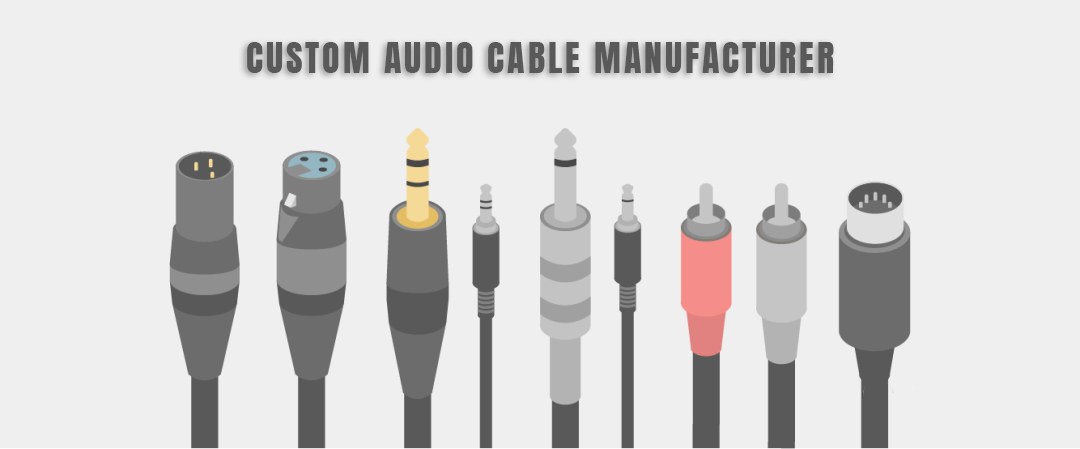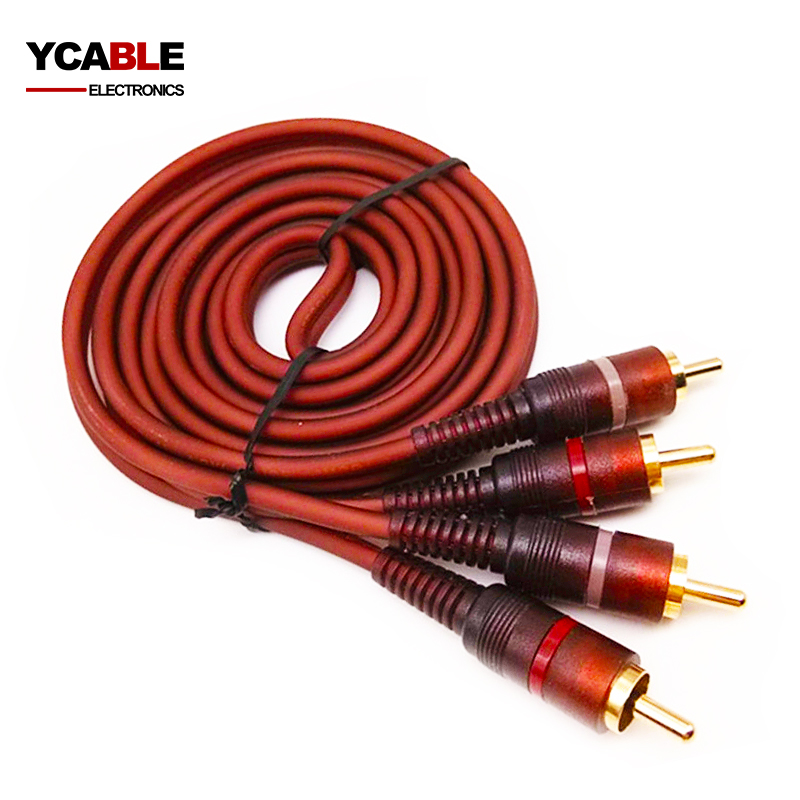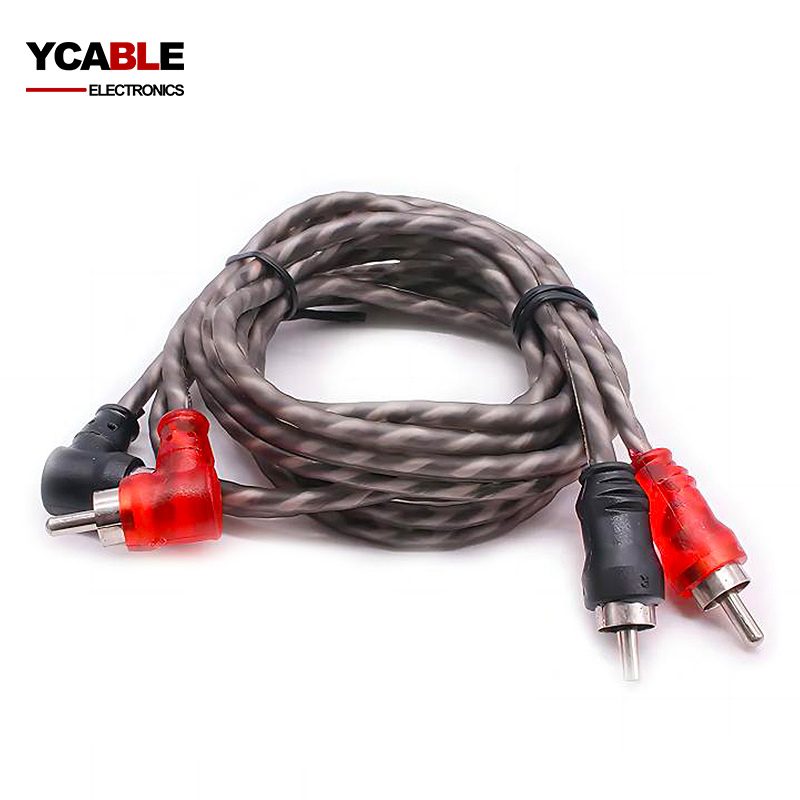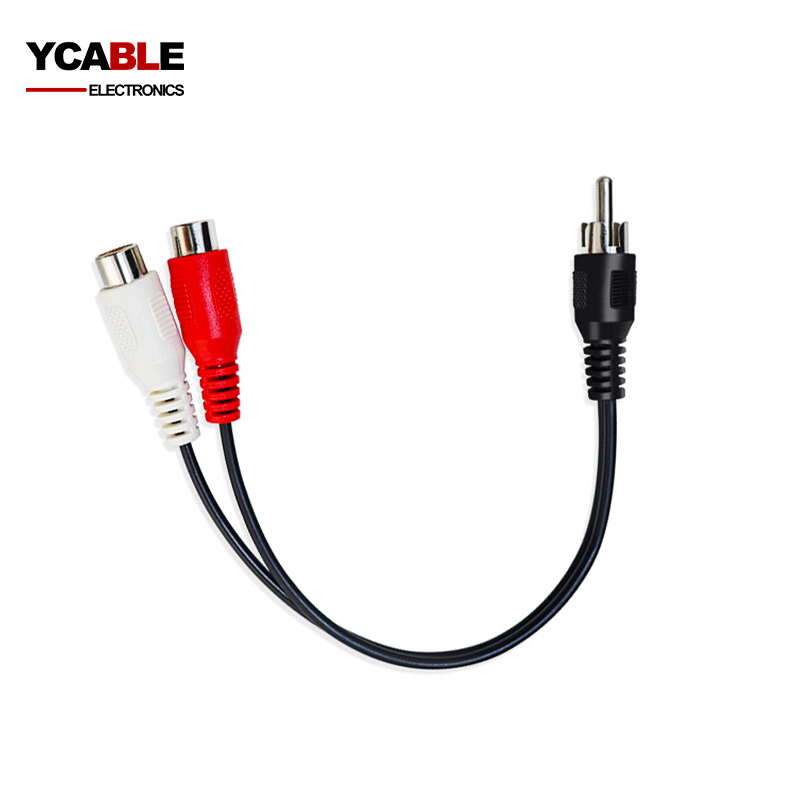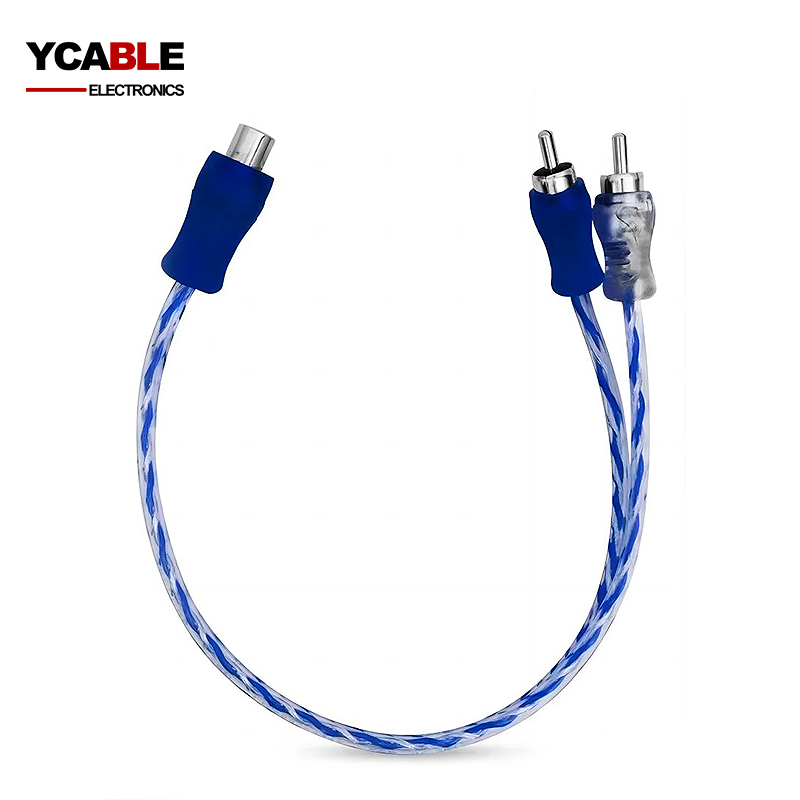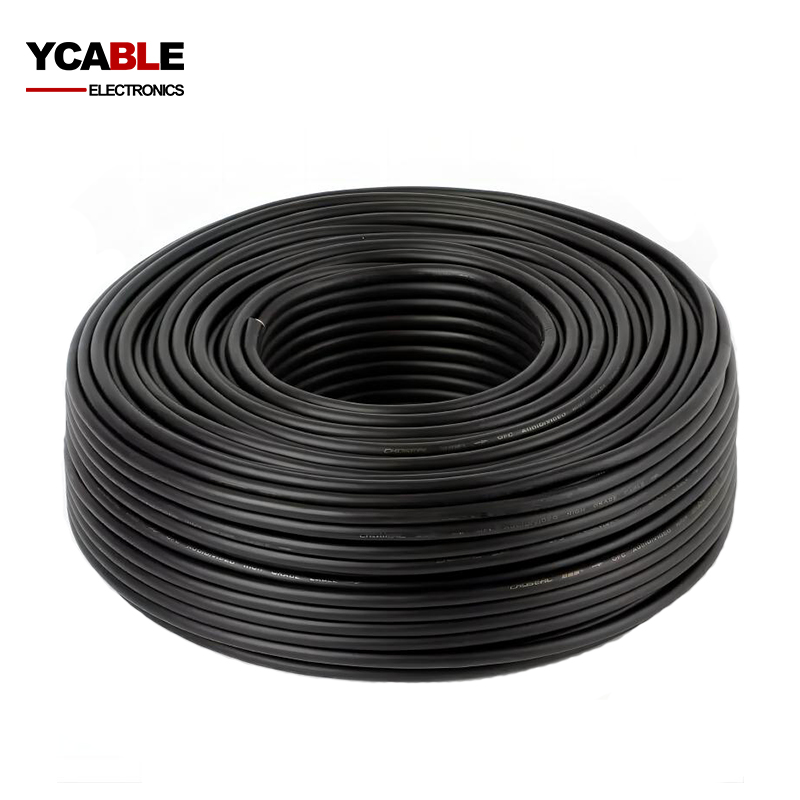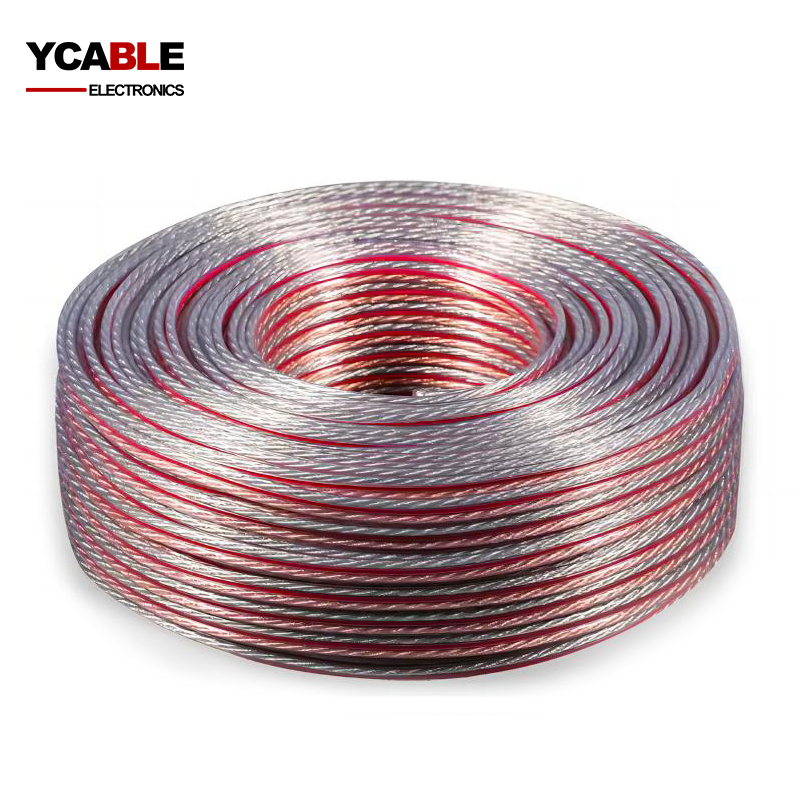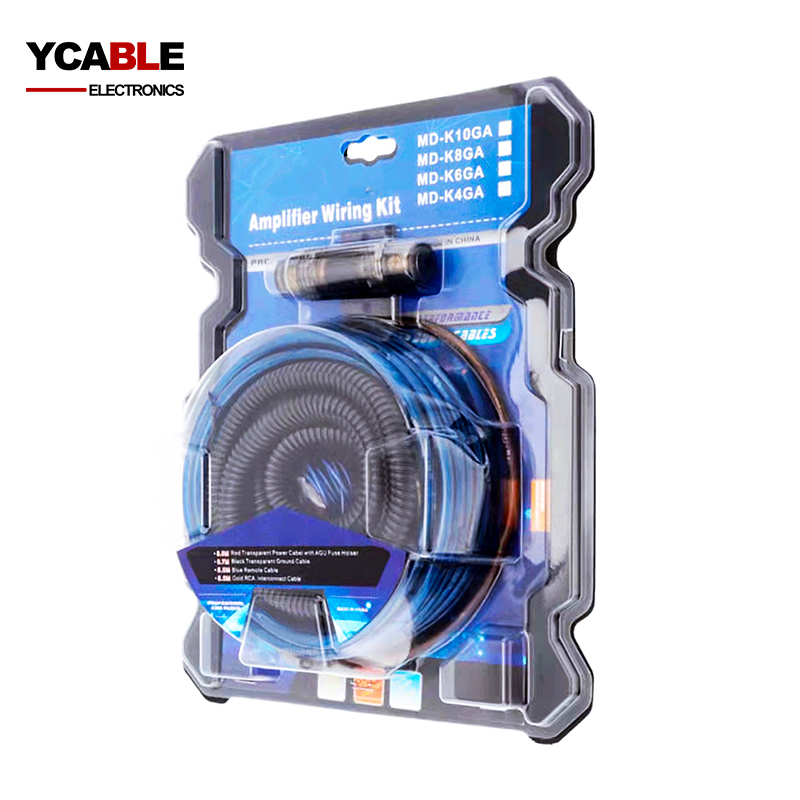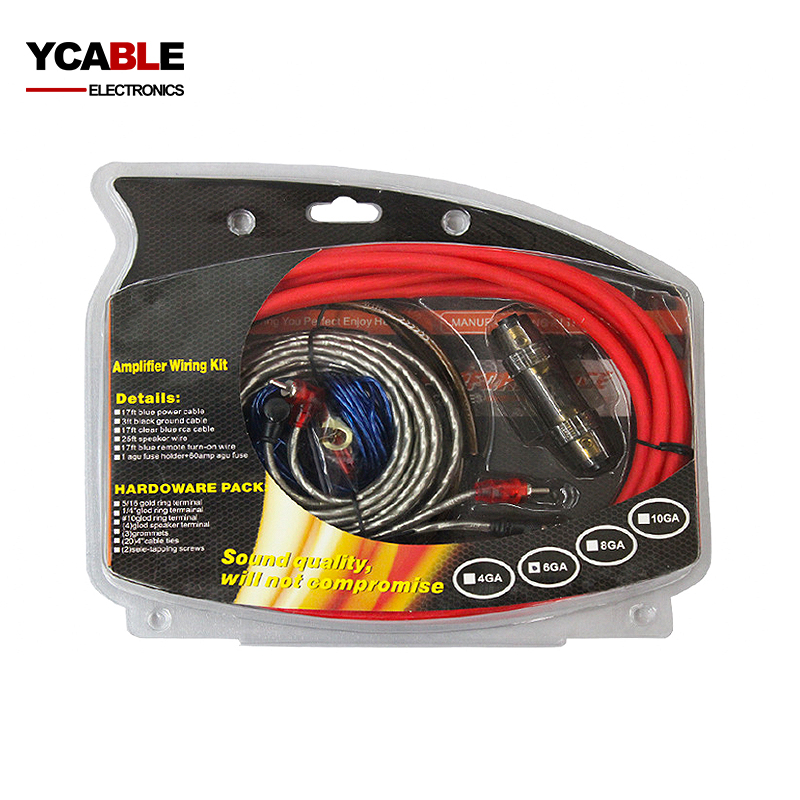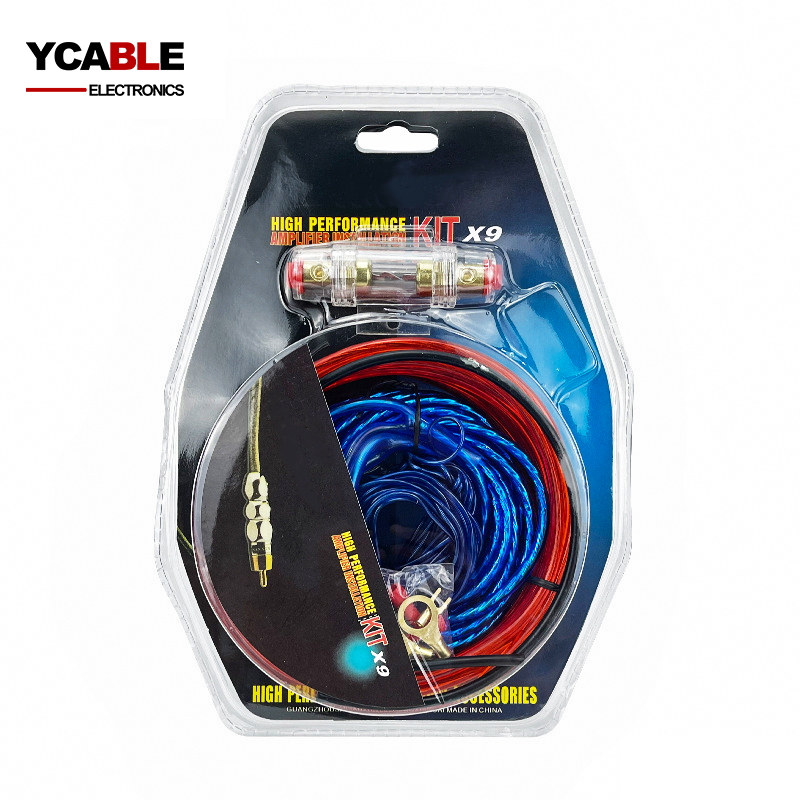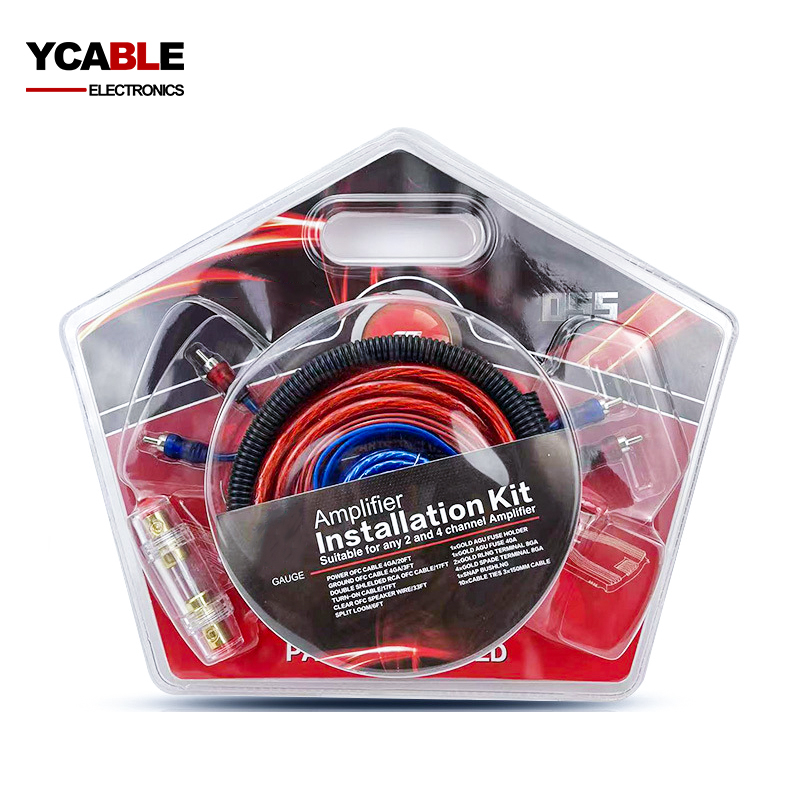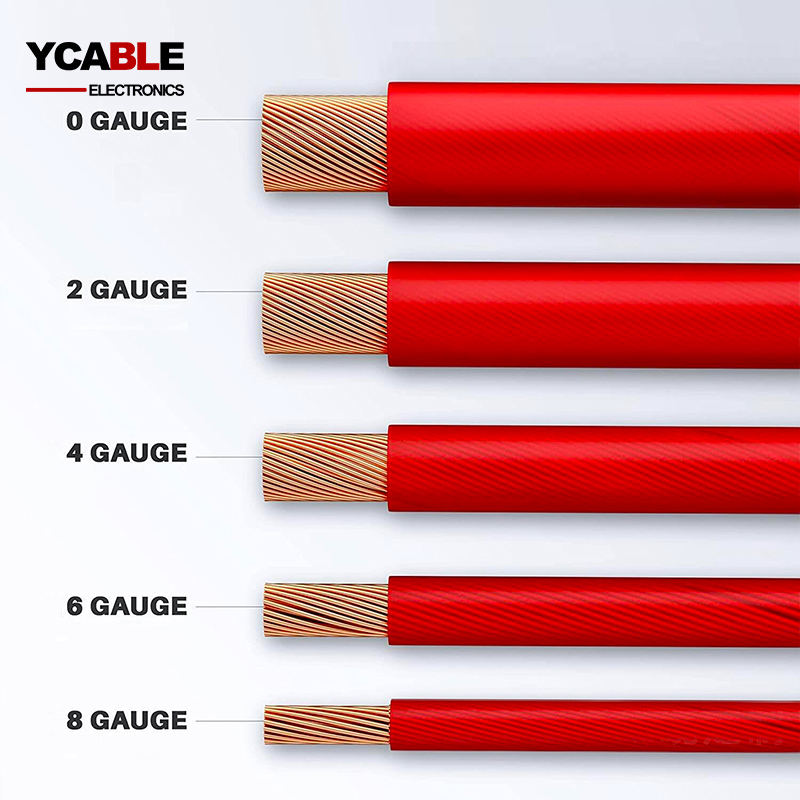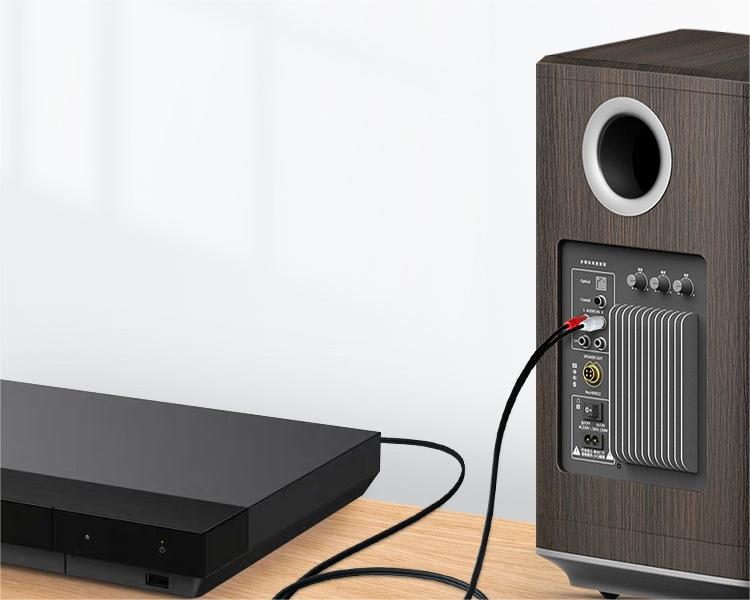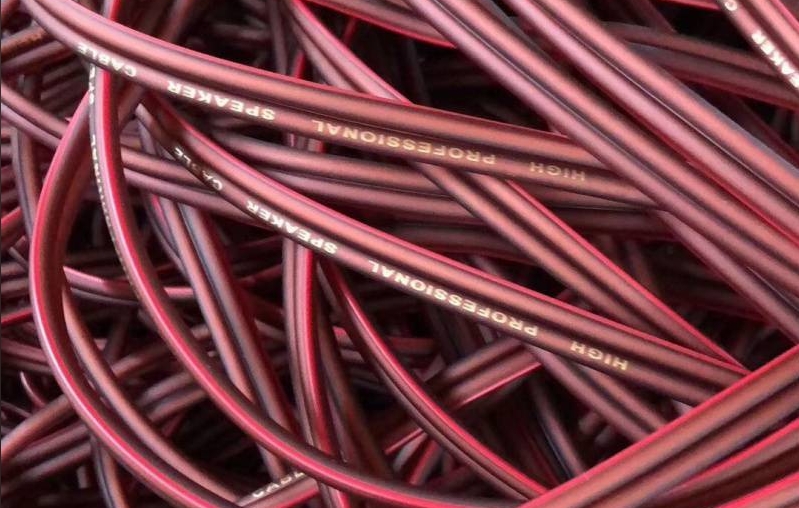Best Custom Audio, Video, Speaker Cable Manufacturer In China
Audio Cable Catalog
RCA Audio Cable
Custom RCA Audio Cables Gold-plating 2 male to 2 male RCA cables for amplifier/subwoofer
L-shaped RCA Audio Cable
Nickel-plated 2 male to 2 male(L-shaped) RCA cable transparent PVC
0 Gauge Amplifier Wiring Kit
Best 1/0 0 Gauge Amplifier Wiring Kit Manufacturer For Car Audio Subwoofer, CCA or Pure
4 Gauge Amplifier Wiring Kit
Best 4 Gauge Amplifier Wiring Kits Manufacturer 4 GA Amp Wire Kit Supplier, 4GA power ca
8 Gauge Amplifier Wiring Kit
Best 8 Gauge Amplifier Power Wiring Kit For Car 1000 Matt. A car amplifier wiring kit is
10 Gauge Amplifier Wiring Kit
Best 10 Gauge Amplifier Power Wiring Kit 400 800 Watt Manufacturer,
Transparent Battery Cable
YCABLE ELECTRONICS stands as your artisanal source for a broad spectrum of battery cable
YCABLE Electronic is one of the most experienced manufacturers produce audio cables in China. which provides a comprehensive of high-quality audio cables and compliant audio cable kits, as well as expert technical support and fast delivery. YCABLE ELECTRONICS also provides OEM and ODM services to help customize your cable solutions.

YCABLE ELECTRONICS-Audio Cable Manufacturer In China
In the last decade, YCABLE ELECTRONICS has expanded its portfolio significantly, embracing a diverse collection of high-fidelity audio solutions. The product line at YCABLE, including audio and video connectors, loudspeaker conductors, RCA connectors, and comprehensive audio cable sets, has transformed the realm of high-quality auditory experiences.
Our design philosophy centers on crafting low-mass, high-efficiency cables that facilitate rapid signal transmission and are precisely tailored for impeccable impedance harmony. Our commitment is anchored in reducing detrimental filtration to preserve the authentic acoustic character of your audio output.
As a distinguished entity among audio cable manufacturers, particularly in the realm of designing, engineering, and assembling within China, YCABLE commands full authority over its production pipeline. This sovereignty in overseeing the artisanship of our offerings guarantees the uniformity, excellence, and preeminence of our audio conduits and components.
The variety of audio cable types available is remarkably extensive, catering to both consumer and professional needs across various technological generations. This diversity can pose challenges in selecting the ideal audio cable for new setups, be it for casual listening, live performances, or professional and amateur mixing. Factors such as compatibility with digital or analog systems, connections for older legacy devices, cable length considerations, and the intricacies of shielding and balance, all play a crucial role.
However, navigating through the plethora of audio cables for production and entertainment doesn't have to be a daunting task. We offer an exhaustive guide to the myriad types of audio cables and their specific applications, helping you discern the right choice for your unique needs.
We can offer you those audio cables:
- RCA Audio Cable
- XLR Audio Cable
- Microphone Cable
- Speaker Cable
- Battery Cable
- Amplifier Wiring Kit

RCA Cables
RCA cables, prevalent in home audio/video setups and DJ configurations, link CDJ players and turntables to mixers. Their structure, containing only two wires, mirrors that of TS cables, rendering them unbalanced by nature. To mitigate signal degradation, it's prudent to maintain their length at a minimum. Various devices can be interconnected using RCA connectors, but for incompatible devices, cables with diverse connectors can serve as a bridge. Yet, for connecting standard consumer electronics, contemporary alternatives like HDMI offer more advanced solutions.
RCA Connector Varieties
RCA connectors and cables, essential in audio cable manufacturing, are diversified into several types tailored to distinct applications.
- Stereo RCA Connectors: Frequently encountered in the audio realm, stereo RCA connectors typically comprise a duo of RCA plugs. These connectors are integral in connecting stereo audio devices like CD players, speakers, headphones, and amplifiers, facilitating stereo sound transmission.
- Mono RCA Connectors: Mono RCA connectors cater to single-channel audio signals, distinguished by their solitary RCA plug. Commonly employed in mono audio scenarios, these connectors are ideal for devices like microphones and singular audio sources.
- Subwoofer RCA Connectors: Specializing in low-frequency sound enhancement, subwoofer RCA connectors differ from standard RCA types. They often feature thicker insulation and enhanced shielding, optimizing them for subwoofer connections. While regular RCA connectors can suffice, using a subwoofer-specific connector is recommended for achieving deeper, more resonant bass sounds in audio systems.
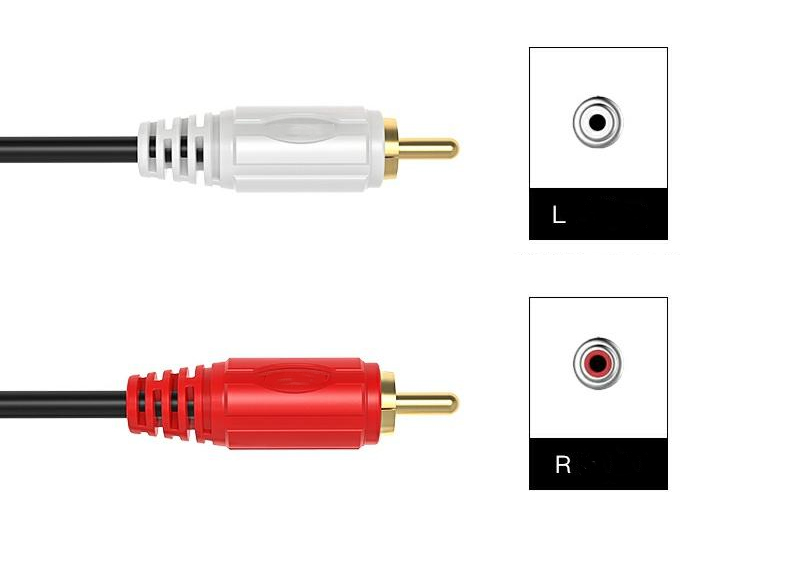
Assorted RCA Adapters
RCA adapters have evolved, branching into various forms like straight and angled variants. As digital audio connectors continue to emerge, a plethora of RCA adapters have surfaced, enabling conversions between RCA and other connection types. Notable examples include:
- RCA to HDMI Adapter: Converts RCA analog signals to digital HDMI, facilitating the connection of older devices to modern HDMI-equipped devices like TVs and monitors.
- RCA to XLR Adapter: These adapters bridge consumer electronics with professional audio equipment, often seen in pro-audio environments.
- RCA Y Splitter: Handy for distributing a single RCA source to multiple devices, these splitters come in configurations like one male to two female, or one female to two male connectors.
- RCA to 3.5mm Adapter: This adapter links RCA output devices (e.g., DVD players, gaming consoles) to 3.5mm input devices like headphones, portable speakers, or audio interfaces.
XLR Cables
Renowned for their robustness, XLR cables are a symbol of durability in the audio cable world. Their balanced design allows for extensive lengths without the worry of signal interference, unlike TS cables. Originating in the 1950s from the Type O connector, with added features like a locking mechanism and rubber insulation around the three contacts, the XLR design has endured. XLR cables, versatile in their applications, are commonly used with microphones, speakers, PA systems, DMX lights, and certain musical instruments. They ensure a clear signal in various lengths, from a compact six-foot cable to an expansive fifty-foot one.
In the XLR ensemble, an array of options proliferates. The selection process transcends the simple dichotomy of XLR male or female connectors. The XLR cables' universe extends to various pin configurations, with the predominant type being the 3-pin, or XLR 3. These 3-pin XLR cables are fundamental in linking microphones with amplifiers or mixers. The spectrum widens to include 4-pin, 5-pin, 6-pin, and 7-pin XLR cables, the latter being commonly employed in DMX lighting setups for theatrical stages.
For scenarios demanding portability and compactness, where ease of access is crucial, mini XLR cables emerge as a fitting choice. These cables maintain the same dependable quality in audio signal transmission while presenting a reduced, more manageable size, conducive to easier handling and storage.
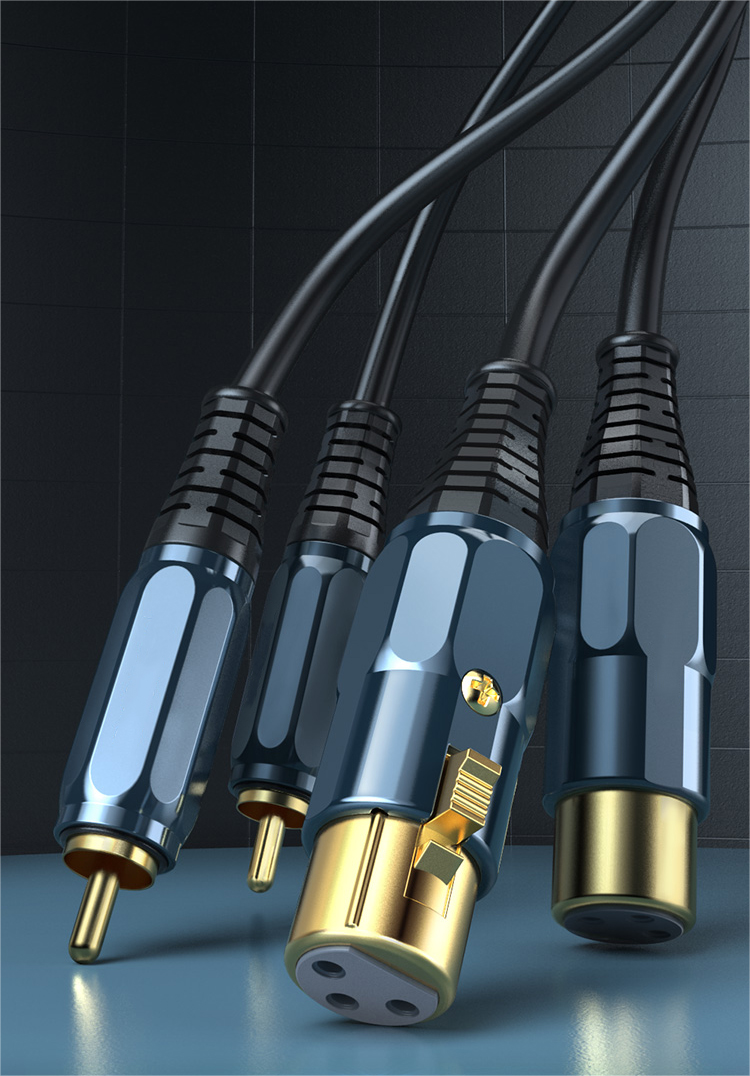
Speaker Cable
Speaker wire forms the electrical bridge between loudspeakers and amplifiers. Modern versions comprise multiple conductors, each encased in insulating materials like PVC, PE, or Teflon, with rubber as a less common alternative. These wires, though electrically similar, are marked to denote correct audio signal polarity. Typically found as zip cord, speaker wire's key electrical attributes include resistance, capacitance, and inductance, with resistance being paramount. Low-resistance wire maximizes the power transfer to the speaker coil, enhancing both power and sound quality.
Before delving into the suitable gauge for speaker wires, it's important to grasp the concept of wire gauge. This term relates to the cable's thickness under the American Wire Gauge (AWG) standard. A lower AWG number indicates a thicker wire. Common speaker wire sizes include 12AWG (quite thick), 14AWG, 16AWG, and 18AWG (relatively thin).
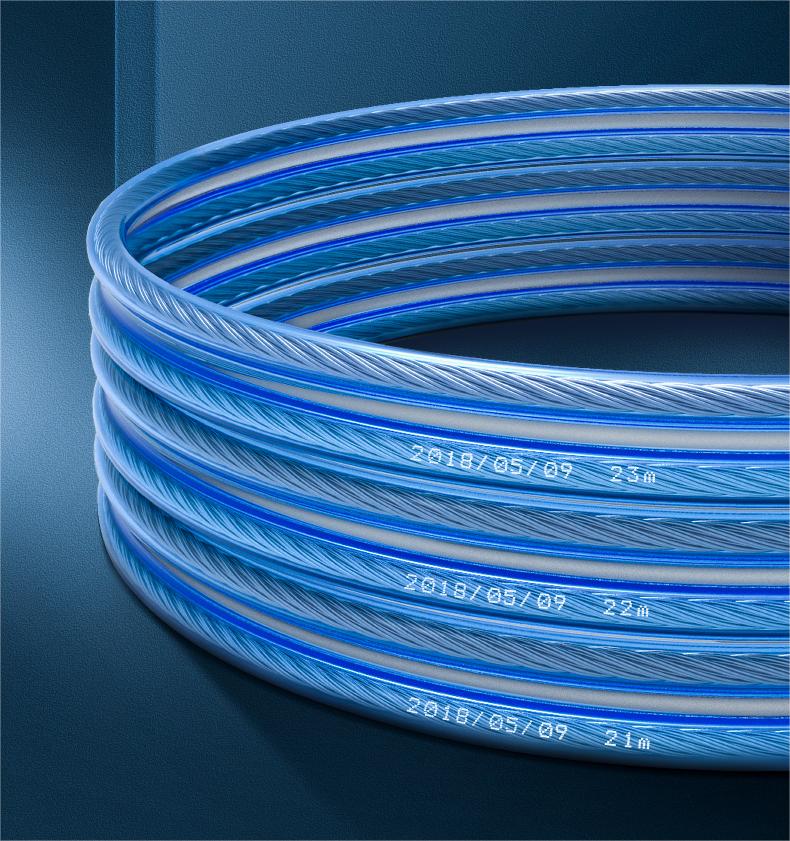
Speaker Cable Specification
| Gauge | Area | OD | Rated Power |
| 20GA | 2*0.4MM2 | 3.0x6.0MM | 3W-20W |
| 18GA | 2*0.8MM2 | 3.5x7.0MM | 10W-100W |
| 16GA | 2*1.18MM2 | 4.0x8.0MM | 30W-500W |
| 15GA | 2*1.57MM2 | 4.2x8.4MM | 60W-1500W |
| 14GA | 2*2.36MM2 | 4.5x9.0MM | 80W-3000W |
| 12GA | 2*3.2MM2 | 5.0x10.0MM | 100W-4500W |
we can custom the size of the speaker cable, custom the length of the speaker cable, custom the material of the conductor and the insulaiton, like CCA conductor, OFC coductor, siliver plated copper conductor, PVC material, PE material, soft smoke pvc material and so on, we also can custom the different colors for you.
Amplifier Wiring Kit
Amplifier kits, essential for the functioning of amplifiers, encompass power, ground, and remote wires, along with a fuse, fuse holder, and additional installation accessories for a streamlined setup. YCABLE ELECTRONICS offers kits varying in wire gauge and construction, with a lower gauge indicating a higher metal strand count. This higher strand count facilitates increased current flow. Choosing an appropriate amplifier kit, matching the amplifier's power rating and performance expectations, is crucial as it represents the system's potential bottleneck.
Car amplifiers are sold without any wiring, so you're responsible for providing the amp's power and ground wires, an inline fuse, a remote turn-on wire, plus RCA and speaker cables.
Power and Ground Cabling
- The thickness of the power and ground cables is crucial. They must be hefty enough to handle the amp's electrical current needs. Otherwise, the amp may not function correctly or produce its full power output. The amplifier's manual will usually guide you on the wire size to use. You can also look up information on choosing the appropriate wire size. Make sure to measure all relevant distances to know the lengths of wire you'll need.
Inline Fuse for Safety
The inline fuse is a critical safety feature. Positioned near the battery connection on the main power cable, about six inches away, it's designed to prevent fires in case of a short circuit, thus protecting the wiring, your vehicle, and yourself. Different wire manufacturers have varying current capacity ratings for their wires. As a general guideline for a standard 16- to 20-foot cable run, you should use:
- A 25-amp fuse for 10-gauge wiring
- A 60-amp fuse for 8-gauge wiring
- A 100-amp fuse for 4-gauge wiring
- A 250-amp fuse for 1/0-gauge wiring
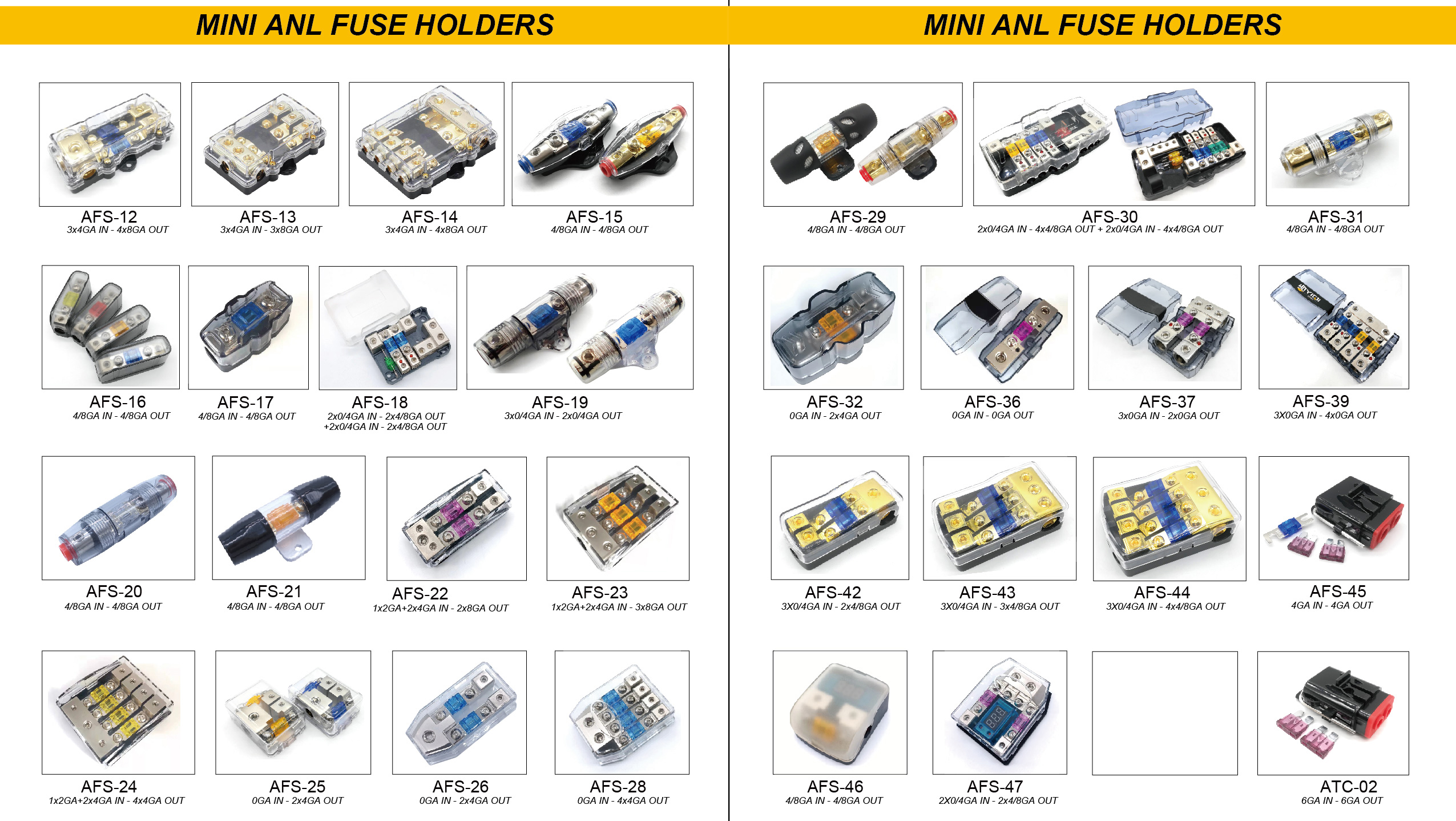
RCA Cables and Speaker Wiring
- Amplifiers typically receive input signals from the receiver's output through RCA cables, which are available in stereo pairs of various lengths.
For new speaker wiring from the amplifier to the speakers, wires ranging from 18- to 14-gauge are generally adequate. The smaller the gauge number, the thicker the wire. For subwoofers, it's preferable to use wires between 16- and 12-gauge.
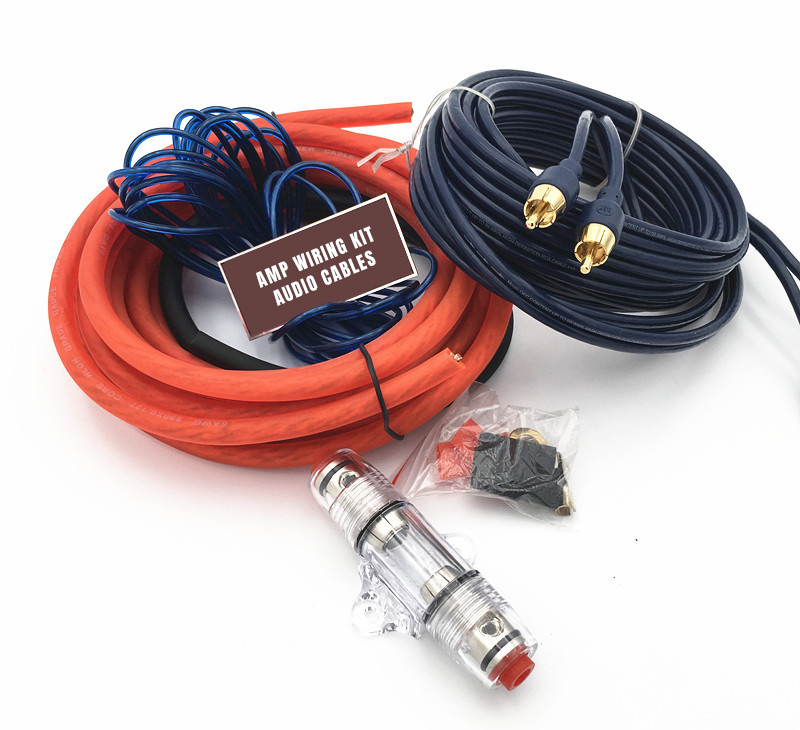
What you need to know about the Audio cables
Quality of Materials in Audio Cables
- Premium audio cables, pivotal in the offerings of audio cable manufacturers, are distinguished by their superior material composition. These high-grade materials enhance performance and extend lifespan. For instance, the materials in high-end headphones and audio cables are markedly superior to those in standard OEM cables. Advantages include enhanced shielding, a reduction in noise interference, a natural dB elevation, and noticeable enhancements in audio clarity, soundstage, and definition.
Impact of Cables on Sound Quality
- Cables can indeed influence sound quality, contingent on their material composition. Factors such as shielding play a critical role in minimizing interference and noise. For lengthy cable runs, effective shielding becomes essential to prevent the cable from acting as an antenna. The type and quality of conductors, like copper or silver, and their oxygen content, distinctly shape the audio's sound signature.
UP-OCC Technology in Cables
- At our company, we utilize UP-OCC (Ultra Pure Ohno Continuous Casting), a technique developed by Dr. Ohno of Japan. Unlike conventional copper extrusion, which results in fragmented crystalline structures, the UP-OCC process achieves larger crystal sizes and heightened purity through a distinctive extruding and cooling methodology. This translates to a superior audio quality compared to standard Oxygen Free Copper (OFC).
Importance of Quality Audio Cables
- Quality cables serve as the lifeline to your music. Inferior cables can lead to issues like noise, static, or audio cutouts, detrimentally impacting music quality.
Balanced vs. Unbalanced Cables
- The superiority of balanced over unbalanced cables isn't absolute; it depends on the design of your audio system's components. For a deeper understanding, our guide on balanced versus single-ended cables offers comprehensive insights.
Copper vs. Silver in Audio Cables
- Choosing between copper and silver for audio cables depends on the specific sonic attributes you seek. Silver, being more conductive, can enhance detail but may lessen the warmth in music, especially with forward-sounding headphones. Copper, conversely, enriches the lower frequencies, offering a warmer, musical sound, ideal for certain music genres. The choice hinges on the synergy with your headphones, amplifiers, and preferred music.
Comparing Audio Cables
- The most effective way to compare audio cables is through A-B testing. By using the same track and audio equipment, the differences in sound quality and soundstage become discernible.
